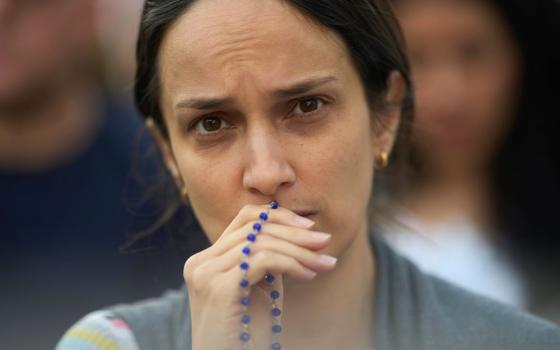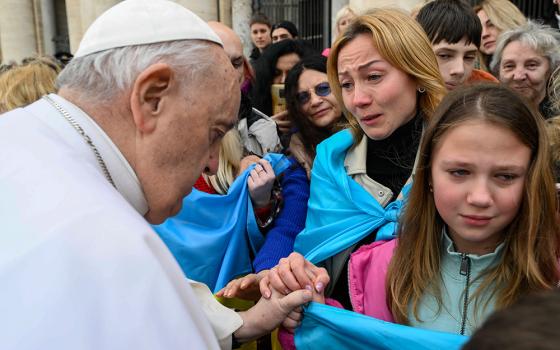As mentioned previously, Commonweal has posted a fascinating symposium regarding religious liberty and, specifically, the statement on that subject adopted by the USCCB’s administrative committee. Today I propose to look at some of the more salient points made by the scholars who contributed articles to the symposium.
William Galston brings not only his scholarly credentials to this – or any – discussion. Galston was domestic policy advisor to President Bill Clinton and was the administration’s point man on the Religious Freedom Restoration Act (RFRA), passed in 1993 by overwhelming majorities, 97-3 in the Senate and unanimously in the House. RFRA was specifically adopted in response to Justice Antonin Scalia’s decision in Employment Division v. Smith which held that neutral laws of general applicability do not require religious exemptions unless Congress puts them in place. There is no constitutional requirement, according to Scalia, that the government demonstrate a compelling governmental interest achieved by means that are the least burdensome to anyone’s religious liberty. RFRA demanded that Congress meet the compelling governmental interest/least burdensome standard.
Galston makes an important point when he assesses the USCCB document. He thinks it mistakenly affirms that freedom of religion is a “fixed concept in American culture or constitutionalism….The bishops are entitled to argue for the conception of conscientious claims. But they cannot fairly assert that government action based on a different conception is breaches a settled understanding.” I think this point is very important. The USCCB needs to drop the rhetoric about the HHS mandate being an “unprecedented” intrusion into religious freedom. Yes, this is a federal mandate to all employers, not tethered to the receipt of federal funds, and so it is different from state level mandates. Additionally, in the face of such state level mandates, many Catholic institutions began to self-insure to avoid the mandate and the status of self-insured Catholic organizations regarding the federal mandate has not been resolved by the administration. But, only in the breathless heights of conservative political thinkers is the HHS mandate “unprecedented” in any meaningful sense. And, as I have mentioned before, it is more than a little hypocritical of these same conservative political thinkers to fall silent when their concern about “unprecedented” affronts against religious liberty cut the other way, as in the case of anti-sharia laws or the anti-immigrant laws in Alabama and Arizona. Sometimes the religious liberty implications of the Alabama law make it into USCCB statements, sometimes not. But, if the USCCB is to be accepted at its words of not pursuing a partisan agenda, they need to ask themselves next week in Atlanta this question: Why, when Archbishop Lori testified before Congress in February, was there no mention of the Alabama law? Was it because the congressional Republicans holding the hearing did not want such an embarrassing issue mentioned? Why has the Kansas Catholic Conference remained silent when Gov. Brownback signed the anti-sharia law? Is it because Brownback is a conservative, pro-life Catholic? Good people can do bad things too, and men who have heard confessions should know that. We can’t trim our ecclesial sails to suit partisan winds if we are to be taken seriously and if we are to frame the issue of religious liberty as a fundamental, even transcendental, concern.
Galston also counsels of good old-fashioned casuistry in dealing with these knotty constitutional questions. Galston writes, “we must do our best to weigh the good against the bad, the just against the unjust, to reach an all-things-considered judgment.” I think another question that the bishops must ask next week is whether or not these are the kind of judgments that the ad hoc committee on religious liberty has been asking itself. I understand the frustration of dealing with this administration, a frustration felt by many Democrats on many issues. But, I also believe that if, in response to the President’s “accommodation” announced in February, the USCCB had consistently and clearly stuck to its insistence about removing the four-part definition of what is, or is not, a religious institution, instead of raising other issues such as the conscience rights of for-profit, private employers, we might have had an agreement.
Michael Moreland’s essay contains the exact, and therefore priceless, adjective to describe the USCCB’s opening claims about the compatibility of Americanism and Catholicism: “sanguine.” It is abundantly clear to me that too many bishops have been listening to Catholic neo-cons like George Weigel and Mary Ann Glendon and Michael Novak, all of whom, in different ways, have been seeking to baptize Americanism in ways that are problematic for some time, provided of course that Americanism is understood in specifically conservative, Republican terms. There is a misreading of John Courtney Murray at the heart of the neo-con narrative, and, frankly a bit of dishonesty: Murray acknowledged the tensions within Vatican II’s Declaration on Religious Liberty. He noted that the negative conception of liberty (freedom from) was not easily grasped by the French theologians who were his counterparts on the drafting commissions, that they feared what was then known as “laicism” or inflated ideas about separation of Church and State. Murray admitted that these issues were “difficult and somewhat troubled waters, that the Declaration itself tried to skate around.” As Professor David Schindler has pointed out for years and, most recently, in his Communio editorial on the HHS mandate, we cannot keep skating around the issue.
Moreland, if I read him correctly, thinks the vital issue in the HHS debate is the institutional freedom of the Church. He notes that the “Catholicism (and especially American Catholicism) is a peculiarly institutional form of religious faith, with its social service agencies, hospitals, and schools at every level.” As I have noted before, the controversy over the HHS mandate is usually cast as a Catholic issue because it involves contraception but, in fact, it is more of a peculiarly Catholic issue because the Church is such a large employer. Few churches can match the degree to which the Church in the U.S. has lived out its commitment to Matthew 25 (whatever you do for these the least of my brethren).
I do wish Moreland had been a little more critical of one of the tropes devised by those who so seek to hijack the USCCB’s concern for religious liberty, which I think is legitimate, and direct that concern to specifically partisan ends, which I think is illegitimate. Moreland agrees with the bishops that the freedom of religion is more than merely the freedom to worship. This is at the heart of Catholic objections to the four-part definition of a religiously exempt institution and I must hasten to point out to be liberal friends who might want to cut the administration some slack on this – that four-part definition is still in place, it has not been changed, and it should scare the livin’ bejeezus out of progressive Catholics.
But, there has been a tendency, and I saw this on display at the Ethics and Public Policy Center’s day-long conference on religious liberty, to make more out of some of the rhetorical uses of the phrase “freedom to worship” than is there. It is true that Secretary of State Hillary Clinton has employed that phrase in certain speeches around the globe. It is also true that in 1941, when President Franklin Delano Roosevelt articulated the “four freedoms” in his State of the Union address he, too, used the phrase “freedom to worship” and not “freedom of religion.” There was no outcry from the hierarchy and, indeed, the correspondence of the key players of the USCCB at the time showed that they used the terms interchangeably. To be clear: Catholics should insist that our more expansive understanding of religious activity merits protection under both RFRA and the First Amendment, but to see a conspiracy where there may be only a word-choice shows the extent to which the Weigel-Glendon-George narrative is way too operative in the counsels of some at the USCCB.
Tomorrow I will look at the other essays in the Commonweal symposium. I hope the bishops are reading these essays in advance of their meeting in Atlanta next week. The issues are as complicated as they are important. Sadly, I fear that many bishops are listening only to one perspective, and not eliciting the opinions of others. Certainly, for some years now, many bishops would rather be caught dead than be caught standing next to a Democrat. But, Professor Schindler is hardly an apologist for the Obama administration. If the bishops wish to avoid the charge that they are becoming an adjunct of the GOP, it is fairly easy to do so, but they will need to make clear next week that they are seeking to vindicate the rights of the Church to conduct her ministries, and that if the administration eliminates the four-part definition of what is and is not a religious institution, they will accept the win. That has not been entirely clear so far. It should be.



